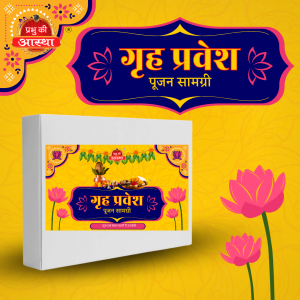Kesar Chandan powder is a sacred powder that is often used in Hindu religious ceremonies, known as pujas, which are believed to have purifying and sacred properties. Kesar Chandan powder is used to create a fragrant paste that is applied to the forehead, known as a tilak, to invoke blessings from the deities. The powder is also used to make a variety of offerings, such as incense sticks and lamps, which are believed to help create a sacred atmosphere and connect with the divine. In addition to its use in religious ceremonies, Kesar Chandan powder is also used in traditional Ayurvedic medicine for its various health benefits. However, it is important to note that the powder is intended for external use only and should not be ingested. Kesar Chandan powder remains an important part of Hindu culture and spirituality and is widely used in religious and spiritual practices.
KASHI ASTGANDH- KESAR CHANDAN DANEDAR
Kesar Chandan powder is a sacred powder that is often used in Hindu religious ceremonies, known as pujas, which are believed to have purifying and sacred properties. Kesar Chandan powder is used to create a fragrant paste that is applied to the forehead, known as a tilak, to invoke blessings from the deities. The powder is also used to make a variety of offerings, such as incense sticks and lamps, which are believed to help create a sacred atmosphere and connect with the divine. In addition to its use in religious ceremonies, Kesar Chandan powder is also used in traditional Ayurvedic medicine for its various health benefits. However, it is important to note that the powder is intended for external use only and should not be ingested. Kesar Chandan powder remains an important part of Hindu culture and spirituality and is widely used in religious and spiritual practices.
Related products
-
 Read more
Read moreDiwali Puja Samagri – Complete Kit for a Divine & Auspicious Celebration Celebrate the festival of lights with devotion and purity using our Diwali Puja Samagri, a specially curated kit that includes all essential items required to perform a traditional Diwali Puja at home or in the office. This complete set is ideal for Lakshmi-Ganesh Puja,…
-
 Read more
Read moreDiwali Puja Samagri – Complete Kit for a Divine & Auspicious Celebration Celebrate the festival of lights with devotion and purity using our Diwali Puja Samagri, a specially curated kit that includes all essential items required to perform a traditional Diwali Puja at home or in the office. This complete set is ideal for Lakshmi-Ganesh Puja,…
-
 Read more
Read moreGrih Pravesh Puja Kit – Complete Essentials for an Auspicious New Beginning Step into your new home with divine blessings and positive energy using our Grih Pravesh Puja Kit, a comprehensive set of sacred items specially curated for performing the traditional housewarming ceremony. According to Vastu and Hindu traditions, a Grih Pravesh Puja cleanses the space,…
-
 Read more
Read moreShani Puja is a Hindu ritual performed to appease Lord Shani, the God of Justice and Karma. This puja is believed to remove the malefic effects of Saturn in one’s horoscope and bring peace and prosperity in their life. The puja involves the chanting of mantras, offering of puja items, and performing aarti to Lord…






Reviews
There are no reviews yet.